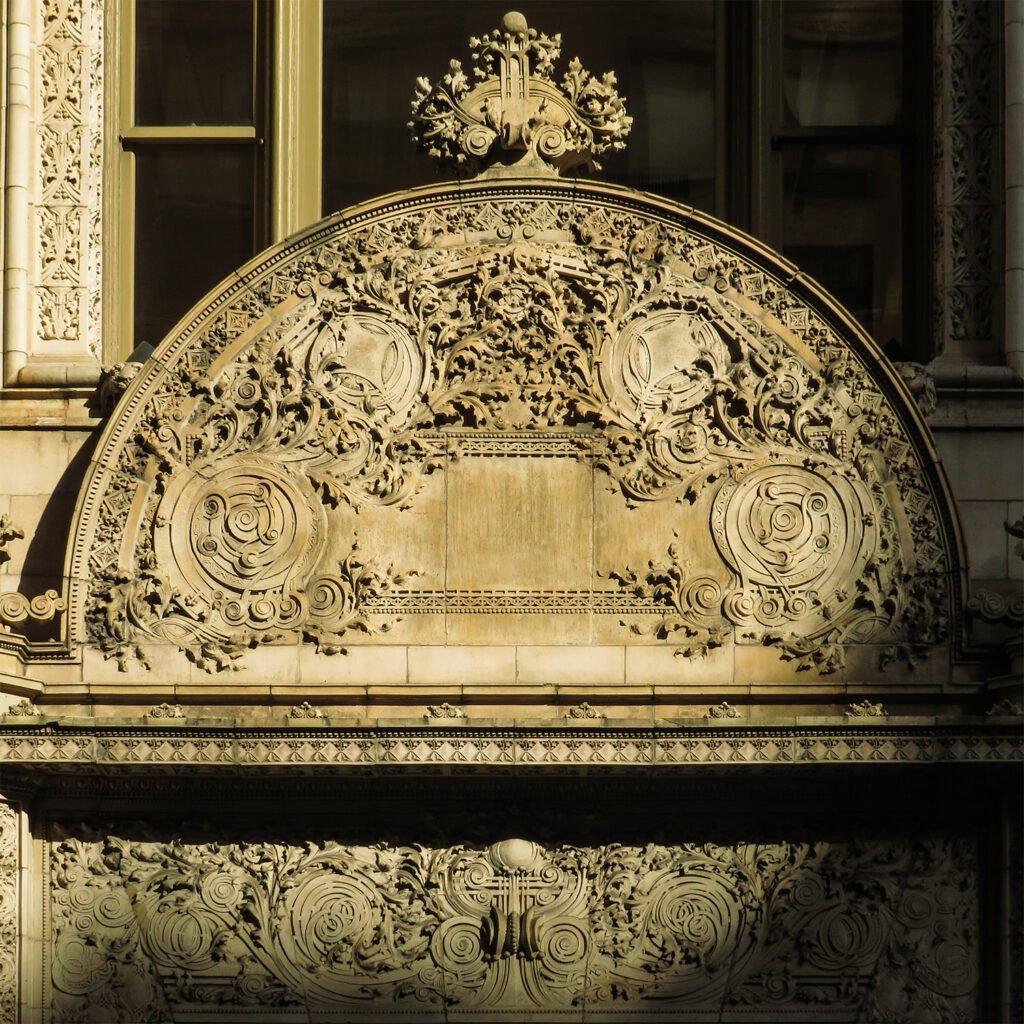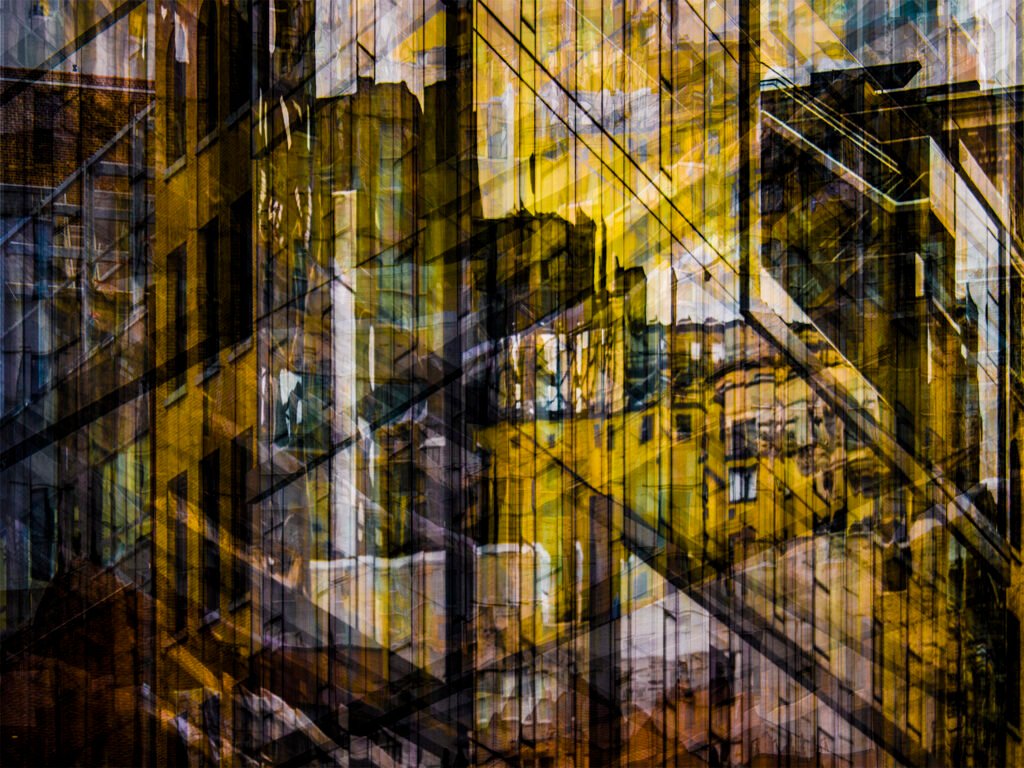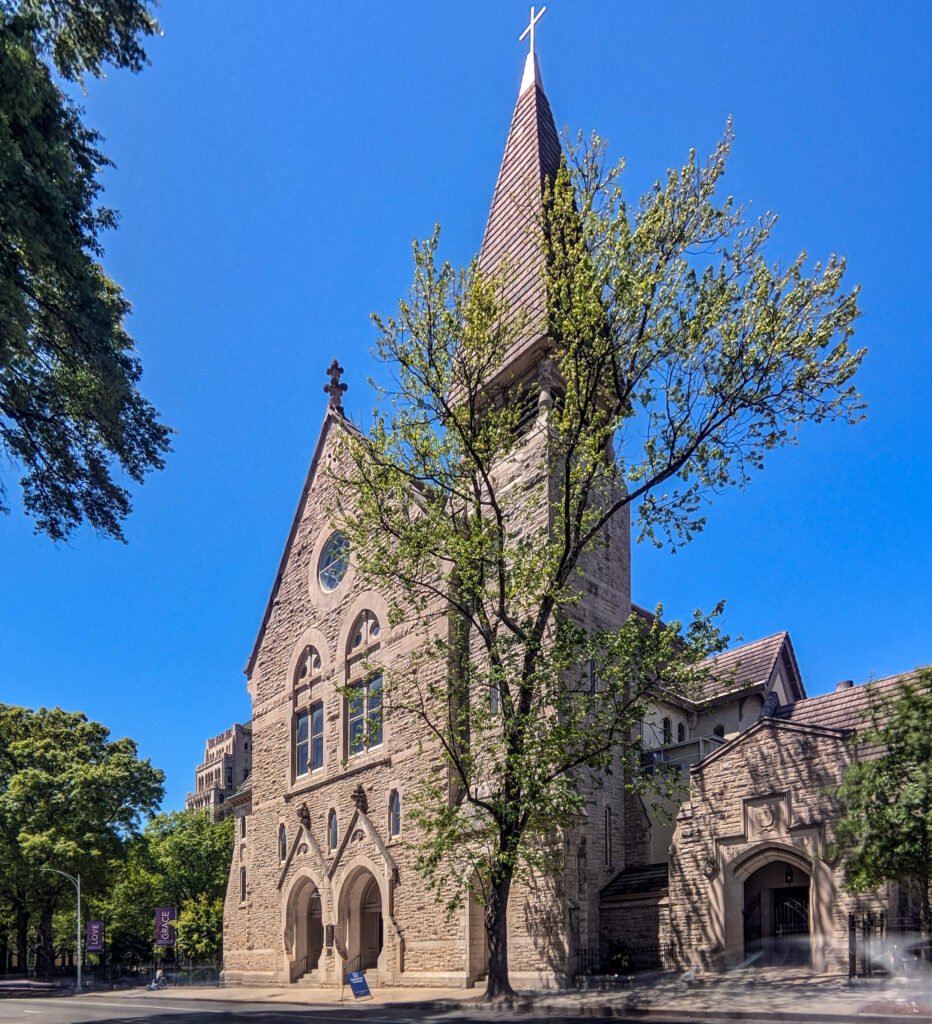The following letter was originally published in the October 1893 edition of The Southern Architect, and was written by Edmund George Lind (1829-1909), professionally known as E.G. Lind, a British-born architect who spent most of his life and career in Baltimore but practiced in Atlanta from 1883 to 1893.
Here, Lind reported on his visit to the annual convention of the American Institute of Architects in Chicago, held in July 1893, when the city was also hosting the massive World’s Columbian Exposition.
Chicago was then emerging as the epicenter for modern architecture in the United States — led by Burnham & Root, Louis Sullivan, and Frank Lloyd Wright — and the exposition became a watershed moment for the industry, ushering in the classically-inspired Beaux Arts style that dominated American architecture for decades.

As Lind noted, the exposition was largely planned by John Wellborn Root, an architect who was born and raised in rural Georgia and practiced in Chicago with D.H. Burnham. Root pioneered the modern steel-framed skyscraper, and his only work in Georgia was the 8-story Equitable Building that was Atlanta’s first “skyscraper” when it opened in 1892.
In the early 1890s, architecture in the Southeast was still embarrassingly behind the rest of the country, and of the dozen or so architects then based in Atlanta, only Lind and G.L. Norrman are known to have visited the Chicago exposition.
Lind retired shortly after his Chicago visit, but Norrman immediately began incorporating elements of Chicago architecture into his designs and produced several strikingly modern buildings directly inspired by the Beaux Arts style and the works of Louis Sullivan and Burnham & Root.
Coming from the overgrown backwater of Atlanta, Lind was clearly dazzled by the bustling city of Chicago, at the time the second largest in the United States. Here he references his visit to Burnham & Root’s 21-story Masonic Temple — then the tallest building in Chicago — and Sullivan’s Auditorium Building, then the largest building in the United States.
For a man of the 19th century, Lind took a surprisingly progressive attitude toward women, praising the unnamed “lady architectress” of the Women’s Building (Sophia Hayden), at a time when the first wave of female architects prompted fierce opposition in the industry. Lind also noted that the women of Chicago were as “pushing and independent as the men”, concluding rather cheekily: “I like them.”
And just to prove that some things never change: Lind marvelled that Chicago actually buried its “unsightly” telegraph lines — Atlanta still refuses to bury its utility lines.
“Impressions of An Architect at the Fair”
The Editor of Southern Architect:
“When I left Atlanta for Chicago I fully intended transmitting you a prompt and faithful report of the proceedings of twenty seventh annual Convention of the A.I.A. and the World’s Congress of Architects, as well as some particulars of the World’s Fair and the city itself, but I have been in such a constant state of wonderment and weariment since my arrival, that I have felt equal to nothing except resting and getting nothing of that.
The fact is, anyone coming to Chicago and expecting to live on in the old fashioned way will be surprised to find he has got to do two days’ work in one all the year round or he will soon be nobody and nowhere. Everything here goes with a rush. It is worse than New York. Even the women go ahead as no other women can, if they do have big feet, which I have failed to notice; they make use of them, and are quite as pushing and independent as the men if not more so. I like them.
About the convention. I was greatly disappointed in finding so small an attendance of architects. I had expected hundreds where tens only were visible, and felt sure the great fair would bring such an abundance of architects from all parts of the world that a chance would be given of meeting many old friends, but the attendance was really slimmer than usual, while the foreign element was almost entirely wanting. One Englishman alone representing Great Britain, and a Japanese, Japan. France and Germany had representatives somewhere, but did not come within my ken. Many papers had been forwarded for reading to the convention which will be published with the proceedings in due course of time.
Monday, the 31st of July, President Edward H. Kendall of New York, opened the convention with an address. General business was transacted, and at an adjournment the members were lunched by the Illinois Chapter, and afterwards carried around the city in four splendid tallyho coaches. With a short stop for lunch on the return trip, this outing consumed a good four hours which were enjoyed immensely, as a good opportunity was afforded of viewing the best part of the city and boulevards. These latter are as beautiful as they are abundant, no expense being spared in the decoration and maintenance. I have never seen anywhere landscape gardening in such beauty and perfection.
Tuesday, 1st of August, at 10 a.m., another meeting of the institute was held and business closed. At 2 p.m., same day, the formal opening of the Congress of Architects took place, Mr. D.H. Burnham, chairman, reading a paper, “The Organization of the World’s Exposition,” in which he gave his deceased partner, Mr. Root, all the credit for the conception and arrangement of the buildings and general plan of the whole. More than once Mr. Root’s name was mentioned during the congress, and each time with the greatest of praise.
Wednesday more papers and more entertaining, concluding with an excursion on the Lake to Lincoln Park. Returning later in the evening to the World’s Fair, we witnessed from the boat a grand display of fireworks, which, with the brilliant electric lighting of the Fair buildings and grounds, made a perfect fairyland of the place.
By 10 o’clock we reached the wharf at the foot of Van Buren street, well filled for one day with lunches and sightseeing, and quite ready for rest till the morrow.
The next three days were filled in with reading papers on various subjects relating to architecture, to very small, but appreciative audiences. Then the “World’s Congress of Architects” closed forever.
Why is it architects display so little interest in the profession they practice and profess to love so well? Surely no other body of professional men would have manifested as much indifference as was displayed in this World’s Congress of Architects? To my mind it was both disheartening and humiliating.
The Convention and Congress over, I felt at liberty to indulge in the World’s Fair to my heart’s content and indulged accordingly, winding up each evening by being thoroughly wound up, and retiring at night too weary even for dreams.
It is not surprising one should become fatigued wandering about the Fair grounds, when we are reminded of the fact that Jackson Park and the Midway Plaisance, on which the buildings stand, contain over six hundred acres of land. This is no small surface to cover, and when you come to add to this the wandering in and out and up and down the various buildings, the fatigue encountered is immense.
To attempt even a slight description of the grounds and various buildings composing the Fair would fill a volume and then fall short of conveying an adequate idea of the immensity and beauty of the whole. No expense or labor has been spared, and the results achieved probably surpass any effort ever before made in a like direction. It is fairyland, it is Aladdin’s Palace eclipsed, it is perfection, and America can afford to feel proud.
The sight of the buildings alone was worth coming many miles to see, and I shall never feel sufficiently thankful that for once my bump of economy was overcome by my organ of extravagance, and I was led to visit this land of delectable delights, and spend time and money to so good a purpose.
One cannot fail to be struck with the care and attention bestowed upon the grounds and shrubbery; they are kept in beautiful condition and the floral designs are splendid. I was told $4,000,000 had been laid out on these grounds previous to their selection for the Exposition, and altogether they had cost $5,000,000.
The water front is about two miles in extent, beautifully adorned architecturally, presenting a magnificent appearance seen from Lake Michigan. In various parts throughout the grounds beautiful sheets of water are provided, symmetrically or naturally formed, adding greatly to the charm of the whole, and as some of these have boats and gondolas plying on them, the scene is bright and lively in the extreme.
When it is considered how many architects were employed to design the various buildings composing the Exposition, it is remarkable that so much harmony should prevail as a whole. No less than ten architects (three from New York, one from Boston, one from Kansas, and five from Chicago) and architectress has fingers in this glorious architectural pie, the lady architectress being the author of the very beautiful Woman’s building, or rather ther very beautiful building for women. If any one had a doubt before of woman’s fitness for the calling of architecture, let him doubt no longer.
On these buildings have been expended about $35,000,000. They cover twice the area of the Paris Exposition of 1889, and cost twice as much. The supply of electricity alone cost $1,000,000, furnishing 17,000 horse power for electric lighting. The supply of 24,000 horse power of steam is furnished by the largest and best arranged set of boilers ever seen, and one of the engines, the “Allis,” is twice the size of the celebrated Corliss engine used at the Centennial Exposition.
In short, the Fair is a wonder of wonders. At every turn the eye and mind are kept going, and it only requires a sufficient number of visit for the eye and mind to be gone altogether. Just fancy, in the matter of fine art alone there are thousands and thousands of pictures, acres upon acres, which would take a connoisseur twelve months at least to examine, and yet a few days has to suffice to run them over; and here let me say while I think of it, that the United States comes out ahead in art as she has done in everything else. Only a few years ago America was nowhere from an artistic standpoint; now she is in it to stay. Some people think she will some day take the lead, I think she has already done so.
It may be worthy of remark that more people are to be found outside the buildings than inside. The truth is the exhibits attract far less attention than the buildings and grounds. A bicyclist might ride up and down the corridors of all the buildings except the one devoted essentially to art, all day long, without inconveniencing the visitors, so few are there.
The propriety of erecting such expensive temporary buildings for exhibition purposes may be justly subjected to criticism, since the very beauty of the former detracts from the worth of the latter; indeed it is doubtful whether in the near future exhibitions will be found in sufficient number, to furnish an exposition that will be worth visiting if this practice is adhered to. I think it is equally doubtful whether such institutions as the “Midway Plaisance” are at all helpful to the progress of arts and sciences.
No visitor to the World’s Fair can fail to be struck with the immense crowds always to be found on the Plaisance, attracted by the numerous side shows and exhibitions with which that place abounds, most of them merely catch-penny “fakes,” and all making large draughts upon the time and purse of the sightseer. These international fairs were never intended to include such stuff, and it ought not to form any part of them, but they are there, people like it and pay for it; meanwhile the ambitious inventor and exhibitor is left out in the cold.
I cannot close this letter without a word for the city of Chicago proper. It is a wonder, both on account of its size and the magnitude and costliness of its buildings; everything is on such a large and magnificent scale that one doesn’t begin to appreciate what he sees until he sees it in detail. After going over the floor and ascending to the top of a few such buildings as the Masonic Temple and Auditorium, he feels their bigness, and ceases to wonder that there are millions in ’em.
Then the streets are straight and wide, and as a rule very clean for so large a city, while the principle ones are freed from those disfiguring telegraph poles so unsightly in most big cities, the telegraph wires being all put underground. The street car service is abundant and generally good, though to a Southerner, too little respect is paid to the comfort and safety of the passengers in the way of getting on and off, but one doesn’t expect everything. Then too, one is often puzzled to learn the names of the various streets for want of proper signs, which is a great evil in a city where people are in too great a hurry to stop and answer questions, and police are too invisible to be found when wanted, but will these drawbacks the visitor leaves the Windy City of the West with pleasant memories, and a thankful heart that he has escaped alive and whole, and with sufficient funds to carry him back home.”
E.G.L.


